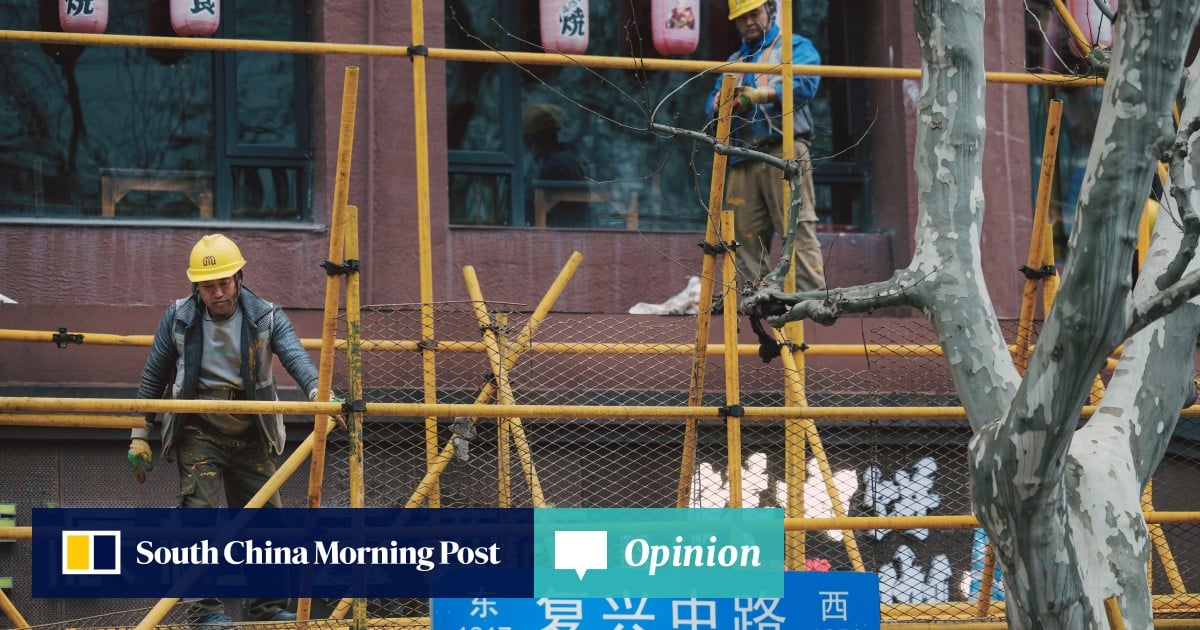This partly explains why the government has stepped up support for the crisis-ridden housing market. Beijing has intensified pressure on banks to assist vulnerable developers, cut mortgage rates to stimulate demand and provided low-cost financing to the urban village renovation and affordable housing programmes.
It also explains why investors – particularly foreign investors – expect Beijing to ramp up stimulus measures later this year despite growing doubts about their efficacy. The findings of Bank of America’s latest Asia fund manager survey, published on March 19, revealed that the largest percentage of respondents wanted to see “credible signs of [policy] easing” before adding exposure to Chinese stocks. Moreover, nearly 90 per cent of respondents expected looser monetary policy in the next 12 months.
These views help shape a narrative around China that has taken hold in recent months, one that pervades the research reports of many Wall Street banks. The gist of it is that China’s economy has bottomed out and more forceful stimulus later this year will provide a fillip to growth, lifting asset prices.
But what kind of recovery should one expect? A swift, V-shaped one is out of the question and has been for some time. As things stand, even a drawn-out, U-shaped one will prove a challenge. A sluggish, L-shaped recovery, or a more damaging W-shaped one in which the economy repeatedly falters, are a distinct possibility.
Just a cursory glance at the economic data for the first two months of this year shows the weakest link – the ailing property sector – is getting weaker. Growth of new home sales fell more sharply in volume and value terms than in December while new home completions contracted for the first time in over a year, undoing some of the progress made in delivering unfinished pre-sold homes. Nomura believes the People’s Bank of China (PBOC) needs to “play the role of lender of last resort”, funding developers to complete pre-sold homes.
However, there is another narrative that is more compelling given Beijing’s focus on economic self-reliance and national security, the acute challenges in shifting from old to new growth drivers and the government’s reluctance to deploy large-scale fiscal support.
Banking on aggressive stimulus – especially the direct support to households and consumers for which markets are clamouring – is like waiting for Godot. It suggests investors are trapped in an old view of China. The story that makes more sense is that weak growth and restrained stimulus are the new normal.
Beijing’s focus on high-quality growth comes at a price – an end to the heavy reliance on debt-fuelled investment in the old economy. This will add to tensions and confusion in policymaking, particularly in the next several years when the old engines of growth require more support to help China transition to a new economic model.
Instead of presenting wish lists of measures that would turn market sentiment around, investors should accept that China’s economy is in a structural downcycle that necessitates major reforms. If a policy bazooka is required, it is one that dramatically increases the credibility and transparency of decision-making at a hugely challenging and unpredictable time for China’s economy.
Do China’s leaders fully grasp foreigners’ concerns about the country?
Do China’s leaders fully grasp foreigners’ concerns about the country?
Still, while the new normal is full of risks and vulnerabilities, it is not all doom and gloom. Since last November, economic data has been beating expectations, according to Citigroup’s Economic Surprise Index. In the first two months of this year, industrial output rose at the fastest pace in two years on an annualised basis, with investment and exports also exceeding forecasts.
Foreign investors are tiptoeing back into China’s equity market. International funds have been net buyers of Chinese shares since last month, reversing six months of outflows, according to data from HSBC. Historically cheap valuations and low foreign participation in China’s stock market helped underpin a rally in recent weeks.
From a technical standpoint, China’s stock market is in a more favourable position than its US counterpart, which is priced for perfection. Uncertainty over US monetary policy, to say nothing about the outcome of the presidential election, is being underpriced.
China’s economy will remain acutely vulnerable, mainly because its downturn is both cyclical and structural. Investors need to get used to the new normal of weak growth and restrained stimulus. A U-shaped recovery would not be such a bad outcome, all things considered.
Nicholas Spiro is a partner at Lauressa Advisory
Denial of responsibility! Chronicles Live is an automatic aggregator of the all world’s media. In each content, the hyperlink to the primary source is specified. All trademarks belong to their rightful owners, all materials to their authors. If you are the owner of the content and do not want us to publish your materials, please contact us by email – chronicleslive.com. The content will be deleted within 24 hours.

